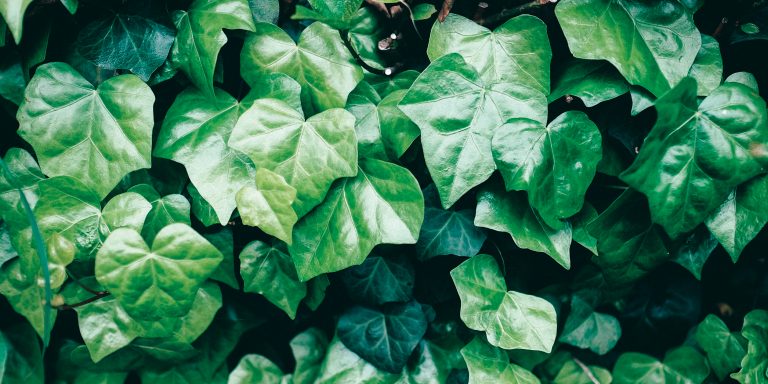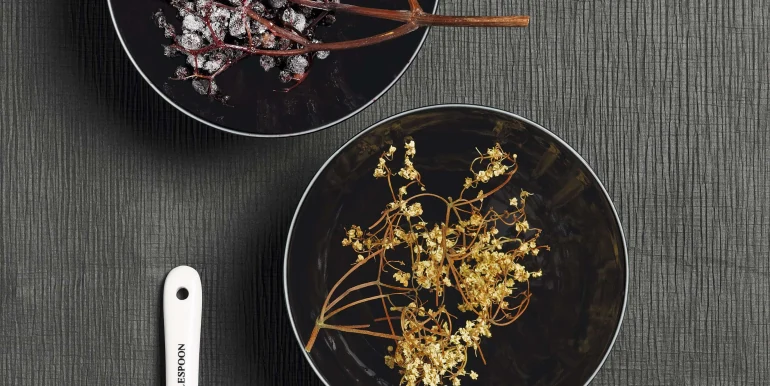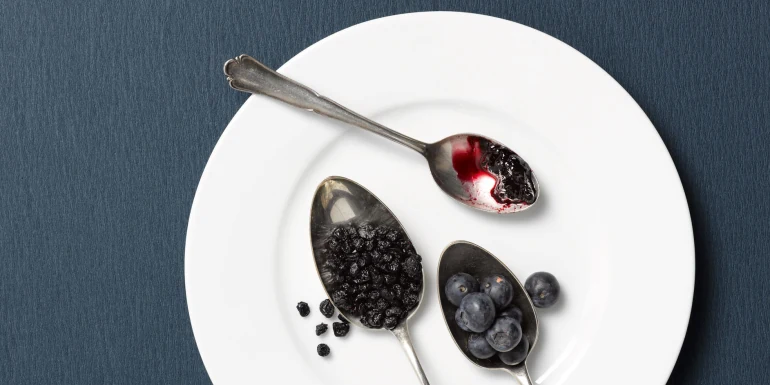
Ivy – the evergreen lung cure
Ivy leaves are highly effective for bronchitis and coughs: the contents are conducive to expectoration and dissolving mucus, thus making breathing easier.
In the bleak late autumn and winter, there is one plant that stands out: the ivy with its evergreen leaves. It is precisely during this time, high season for colds, that ivy comes into its own. Its leaves are used for medicinal products, chronic bronchitis and to sooth acute inflammation of the airways. Ivy leaf extract also helps against whooping cough and chesty coughs. The contents of the evergreen leaf facilitate expectoration and help dissolve secretions in the respiratory tract.
More air for your lungs
Ivy mainly consists of saponins – a group of agents which reduces and liquefies the surface tension of bronchial mucus. It also contains essential oils, which neutralise the germs, and tannins which seal the inflamed mucous membranes. Furthermore, ivy contains flavonoids, which stabilise the blood vessels and aid the oxygen supply in the blood.
To sum up, the perennial climbing plant helps people breathe and brings lightness to the lungs. It does this by prompting the bronchial mucosa to produce fluid mucus, which is easier to cough up. Moreover, it expands the smallest pulmonary alveoli via a complex biochemical process, which helps the oxygen supply to the lungs. The effect is referred to as an indirect “Beta2-mimetic” effect, which is also provided by some synthetic asthma treatments.
Ivy accidentally discovered as cough medicine
Ivy – which grows in most parts of the world – is a symbolic plant. In ancient Egypt it was used in the ritual celebrations in honour of Osiris, the Greeks and Romans also dedicated ivy to the God of Wine. It is now known as a symbol of everlasting life and friendship. The plant has also been used for medicinal purposes over the centuries – with all sorts of applications. The discovery of ivy as a cough medicine was purely accidental: an observant doctor from the south of France noticed at the beginning of the twentieth century that children from the region never suffered from bronchitis.
He noticed from his research that they drank milk from cups made from the wood of the ivy plant. Since then ivy has been a firm favourite for treating coughs. The effect of ivy extract has since been proven by a number of clinical studies. It is normally used for cough juice, drops or in tea, but it should always be taken as a pharmaceutical product as there is an art to preparing ivy as a cure. The first thing is to know when to pick the leaves and secondly the right dosage is required. Too many saponins can cause vomiting, dizziness or drowsiness. Moreover the berries are poisonous and particularly dangerous for children if consumed.
Refreshing breakfast drink
Ingredients (1 portion)
- 20 drops of ivy tincture (if ceres quality: 3 drops)
- 1 organic lime
- 1–2 tablespoons of agave syrup
- 1 teaspoon of matcha powder
- 3 dl nettle tea
- 2 dl carbonated mineral water
Preparation
Pour hot water over the nettle tea, add the organic lime juice, leave it for ten minutes and strain it. Then add the matcha powder, agave syrup and carbonated mineral water. Add the ivy tincture to finish.
Have it for breakfast and this green drink will clear your airways so you can face the day without any shortness of breath.
Family
Ivy plant (Araliaceae)
Appearance
Ivy is a vine which forms different leave shapes depending on the light and height conditions. When close to the ground, the leaves have five edges, are leathery and grow on non-flowering shoots. Higher up, the leaves have three edges and are accompanied by aerial rootlets. The stem lignifies with age and grows as thick as an arm, it can also last up to 140 years. It takes seven years and a lot of light until the higher branches blossom with the triple-edged leaves. Its atypical vegetation cycle is also distinctive: in autumn the ball-shaped yellow flower clusters show through and the bitter-tasting dark blue fruits appear in spring.
Location
It can be found in shadowy mixed forests, on walls, ruins and cliffs, throughout Europe, Asia and North Africa and grows wild in the Southeastern US.
Botanical classification
Ivy is a climbing plant that feeds itself. Contrary to common belief, it is neither parasitic nor hemiparasitic.
Harvest time
Leaves from non-blossoming shoots: blooming starts from May to June with freshly formed ivy plants with tincture in autumn.
Use
- For a dry cough take a cup of cough-relieving tea with ivy leaves three times a day for seven days.
- Standard plant extracts, tinctures or spagyric medicine are advisable for whooping cough and chronic bronchitis. The specific prescription depends on the extent of the breathing impairment, age and the capacity for physiological response.



Newsletter
Find out more about current health issues every month and get all the information you need about our attractive offers from all Helsana Group companies * delivered by e-mail to read whenever it suits you. Our newsletter is free of charge and you can sign up here:
We did not receive your information. Please try again later.
* The Helsana Group comprises Helsana Insurance Company Ltd, Helsana Supplementary Insurances Ltd and Helsana Accidents Ltd.